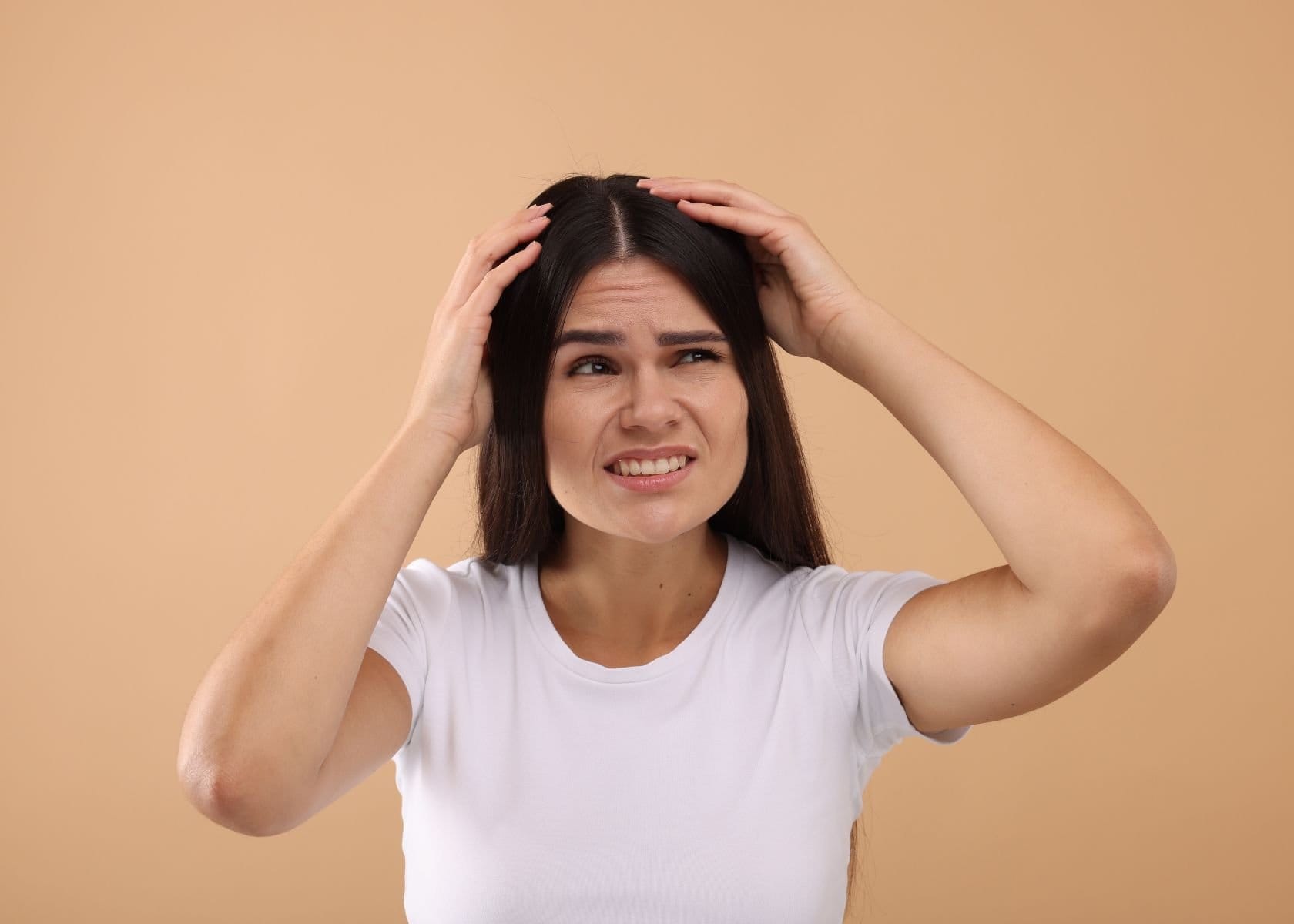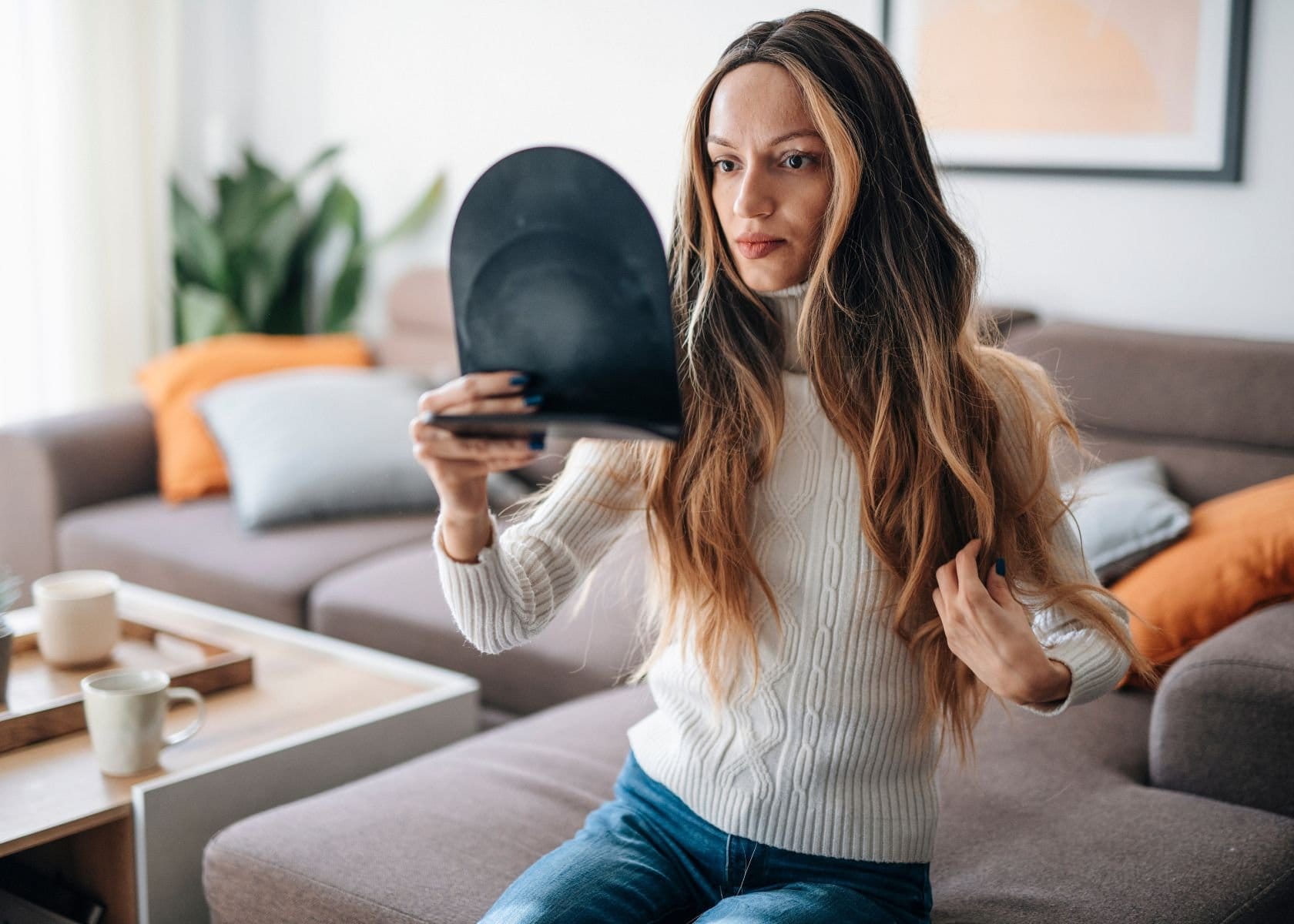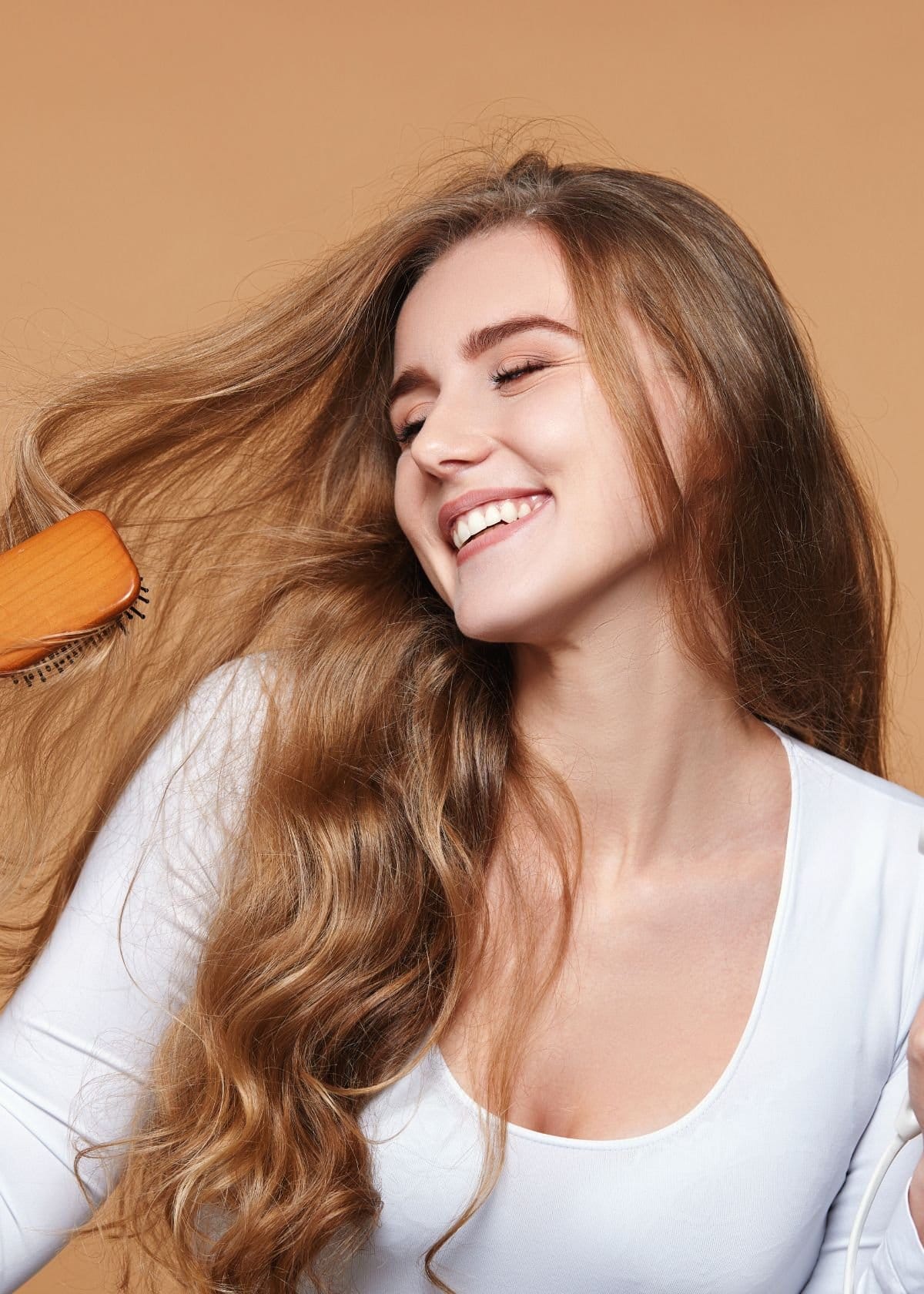Do you ever feel like scratching your head all day when wearing a wig? You're not alone. Many wig wearers experience that maddening itch beneath their hairpiece, turning what should be a confidence boost into an exercise in frustration.
Believe it or not, there are solutions to this hairy predicament.
One helpful fact is that using witch hazel can calm an itchy scalp. Our guide will delve into why your noggin gets so irritated in the first place and offer practical steps to keep discomfort at bay.
From selecting the right materials to simple home remedies, we've got you covered. Keep reading for sweet relief from wig woes!
- Avoid wearing tight-fitting wigs as they can increase scalp tension and lead to itching. Choose a wig that fits properly and use a liner like cotton or silk to reduce irritation.
- Keep both your natural hair and the human hair wig clean by using mild, wig-friendly shampoos; this prevents product buildup on the scalp, which can cause itchiness.
- Use witch hazel as it's a gentle, natural remedy for calming an itchy scalp under wigs. Apply aloe vera gel to soothe and moisturize irritated skin before putting on your synthetic hair.
- Consider hypoallergenic materials if you have sensitive skin or allergies, as these are less likely to cause reactions under a wig.
- Maintain proper hygiene with regular cleaning of your wigs and accessories like caps and liners, replacing them when necessary to avoid additional sources of discomfort.
Causes of Itchiness Under a Wig

Build-up of products, allergic reactions, skin sensitivities, skin irritation, and poor wig quality can all contribute to the itchiness experienced under a wig. Understanding these causes is crucial in finding effective prevention and treatment methods.
Build-Up of Products
Hair styling products can cling to your scalp and wig material, causing a layer of buildup that leads to itchiness. If you regularly use hairspray, gel, or other styling products, these can accumulate under your wig.
This residue irritates the skin and traps bacteria, often resulting in an itchy sensation that's hard to relieve without proper cleaning. Make sure to thoroughly wash your hair system as part of regular wig care to prevent discomfort from product buildup.
Shampooing your natural hair before donning a wig cap liner also helps minimize residue left on the scalp. Using gentle cleansers free of harsh chemicals is essential in maintaining both scalp health and the integrity of your wig.
Rotate between different hair care items if you notice signs of sensitivity or itching; this ensures no single product causes adverse reactions over time.
Avoid slathering too much conditioner or leave-in treatments onto your hair beneath a wig. These can exacerbate synthetic wig itching by creating a moist environment where yeast and fungi thrive—a common culprit behind scalp irritation.
Opt for lightweight products designed specifically for use with wigs and ensure they are fully absorbed into the hair before putting on the hairpiece.
Allergic Reactions
When dealing with itching under a wig, it’s important to consider allergic reactions as a potential cause. Some individuals may experience discomfort due to an allergic reaction to the materials in the wig or the products used on their scalp.
To alleviate this issue, opt for hypoallergenic wigs made from gentle materials that are less likely to trigger reactions. Additionally, frequently clean and sanitize your wigs using mild shampoos and conditioners designed for sensitive skin to minimize potential allergens. Make sure to wash your scalp regularly.
Consider incorporating natural remedies such as aloe vera or witch hazel to soothe any irritation caused by allergic reactions. These gentle ingredients can provide relief without further aggravating sensitive skin.
Skin Sensitivities
Skin sensitivities can lead to itching and discomfort under a wig. Consider using a cotton or silk wig liner to create a protective barrier between your scalp and the wig, helping to alleviate irritation.
Additionally, addressing skin sensitivities with proper scalp care and maintenance can significantly reduce itchiness and discomfort when wearing wigs.
Using witch hazel on a damp cloth or natural cotton pad can also provide relief from itching caused by skin sensitivities. Ensure that the products used for maintaining the wig are suitable for sensitive skin to prevent further irritation.
Poor Wig Quality
Avoid discomfort caused by poor wig quality by choosing high-quality wigs made from breathable materials. Synthetic itchy wigs, especially those of lower quality, can cause irritation and hair itching due to the materials used.
Look for wigs made with soft and lightweight synthetic wigs fibers or consider investing in a natural hair wig for improved comfort. Properly inspect the construction of the wig, including the cap size and ventilation, to ensure it meets your needs for a comfortable fit and minimal irritation.
Consider researching reputable wig brands known for their high-quality products, as this can significantly reduce scalp discomfort and itchiness. Inadequate ventilation in low-quality wigs can trap heat and moisture against the scalp, leading to itching and discomfort.
Prevention and Treatment

Use of a wig cap, cotton or silk wig liner, proper maintenance and cleaning of the wig, and avoiding tight-fitting wigs are essential for preventing and treating itching under a wig. People wear wigs for multiple reasons, but they should make sure that their wigs don't cause itchiness.
If you want to learn more about how to stop hair from itching under a wig, keep reading.
Use of A Wig Cap
To prevent itching under your wig, consider using a wig cap to create a barrier between your scalp and the wig. This will help alleviate discomfort and ensure a more comfortable wearing experience. Here are some tips for effectively using a wig cap:
- Choose a breathable fabric like cotton or mesh for the wig cap to allow proper airflow and reduce moisture buildup on the scalp.
- Ensure that the wig cap fits snugly, but not too tight, to avoid creating additional pressure on the scalp that could lead to irritation.
- Use a wig cap specifically designed for a wig wearer with sensitive skin or allergies to ensure maximum comfort.
- Clean and wash the lace front wig cap regularly to prevent any product build-up or residue from transferring to the scalp and causing itchiness.
- Consider applying witch hazel or aloe vera onto the scalp before wearing the wig cap to soothe any existing irritation.
- Before you wear wigs, make sure that your natural hair is properly secured and tucked away under the wig cap for added comfort.
Using a Cotton or Silk Wig Liner
To alleviate itching and discomfort while wearing a wig, consider using a cotton or silk wig liner. These materials provide a barrier between your scalp and the wig cap, preventing irritation. Here are some additional details to ensure you get maximum relief:
- The smooth texture of silk liners reduces friction, reducing the chances of scalp irritation.
- Cotton liners are breathable and can absorb excess sweat or moisture that may contribute to itching.
- Ensure the liner fits snugly but comfortably to prevent any movement that may cause further irritation.
- Both cotton and silk liners are gentle on the scalp, making them suitable for those with sensitive skin.
- Regularly clean and replace the liners to maintain hygiene and prevent any build-up that could lead to itching. Follow a simple and regular wig-cleaning process.
- Opt for seamless liners to avoid any additional friction against the scalp.
- Look for liners specifically designed for wig wear, as they are tailored for comfort and effectiveness in preventing itching.
How to Stop Hair from Itching Under Wig - FAQs
Wearing wigs, especially for long periods of time, can lead to an irritated, itchy scalp. The friction and lack of airflow under a wig cap can cause discomfort and disrupt your day.
Before you ditch the wig, try these troubleshooting tips. We've compiled the most frequently asked questions about treating itchy scalps caused by human hair wigs and how to get relief.
Why does my scalp itch under a wig?
Itchy scalps under wigs often happen because of dry skin, scalp sensitivity, or the hairpiece irritating your skin.
What can I do to stop my hair from itching under a wig?
To prevent itching, keep your hair and scalp clean, use a comfortable wig-fitting band for protection, and choose wigs made of materials that reduce irritation.
Are there any special tips for synthetic wig care to prevent itching?
Yes! Wash your synthetic wig regularly with gentle products to remove build-up that could cause discomfort and dryness, leading to an itchy scalp.
Conclusion
Understanding the causes of itchiness under a wig and taking preventative measures can help alleviate discomfort. The practical tips provided for relief are easy to implement and efficient in addressing scalp itching.
Have you considered trying the suggested treatments to stop hair from itching under a wig? By following these strategies, you can significantly improve your wearing experience and find relief from common discomforts associated with wigs.
In the comments section below, let us know how you prevent itchiness caused by your wig.
Learn More About Human Hair Wigs





